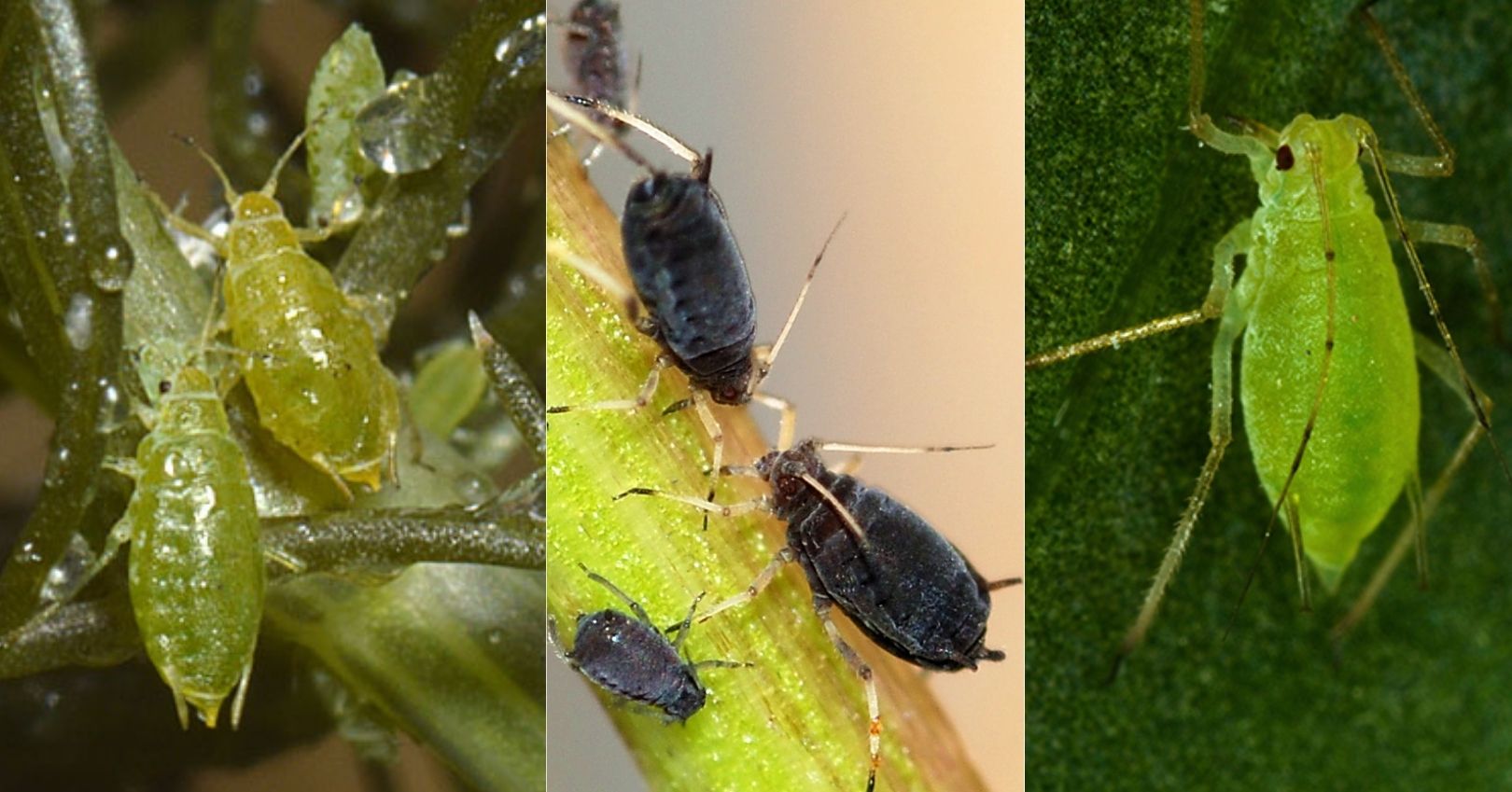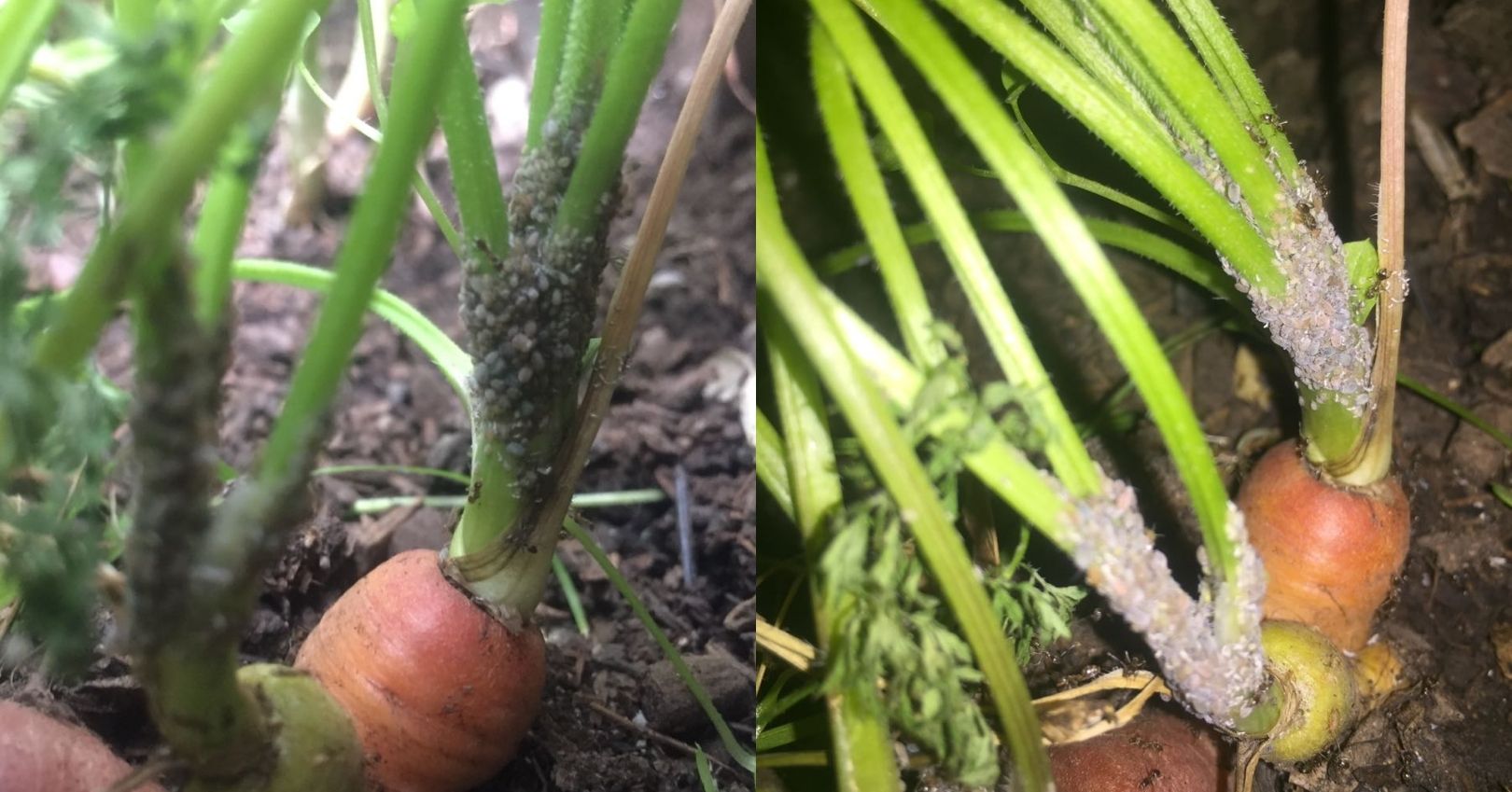Aphids
Willow-Carrot Aphid


Description
Adult: Wingless aphids are about 1 mm long, with a dark yellow head, and gray-green antennae, legs, and cornicles. The body appears dusted with a white wax. Winged forms have a green abdomen with a darker green patch around the base of each cornicle.
Egg: Initially green, but eventually turn black. Ovalshaped and less than half a millimeter.
Life History
Honeysuckle aphids overwinter as eggs on woody hosts in the Caprifoliaceae family (honeysuckle). During the summer months, honeysuckle aphids are found on both woody and herbaceous hosts including carrot. Sexual forms of the aphids are found in all seasons.
Damage
Honeysuckle aphid populations may occasionally build up on umelliferous crops; however, injury resulting in crop loss is rare. Most damage comes from vectored viruses such as celery crinkle leaf mosaic virus.
Bean Aphid
Description
Adult: Both winged and wingless forms are dark green-black color. They have a dull matte appearance (not to be confused with the cowpea aphid, which are shiny).
Egg: Initially green, then turn to a metallic black.
Nymph: Dark green color, with four pairs of white stripes on the surface of the abdomen.
Life History
Bean aphids overwinter as eggs inside the cracks of bark and bud axils of Euonymus and Viburnum spp. Eggs hatch in early spring and produce 1-2 generations of wingless parthenogenetic females followed by a generation of winged females which migrate to umbelliferous crops such as carrot, celeriac, celery, parsnip or related weed species such as lambsquarter and curly dock. In early fall, bean aphids return to host shrubs to lay eggs for overwintering.
Damage
Many roots crops are affected by bean aphids. Feeding symptoms include curling and yellowing of the leaves. The bean aphid vectors multiple viruses to host plants, notably beet yellows virus.
Green Peach Aphid
Description
Adult: Soft, pear-shaped body with red eyes and tailpipe-like appendages called cornicles on the rear of the body. Wingless adults are yellowish or greenish. The winged adult has a yellow-green abdomen, with a large dark patch on its back. It has a black head and thorax and is the same size as the wingless form. The oviparous (egg-laying) form is pinkish.
Egg: Initially yellow or green and become shiny-black as they mature. Eggs measure about 0.02 inches (0.50 mm) long and 0.01 inches (0.25 mm) wide. Eggs are usually deposited near buds of Prunus spp. trees.
Nymph: Similar in shape and color to the wingless adult, but are smaller. Nymphs that develop into winged adults may be pinkish.
Life History
The green peach aphid overwinters as eggs at the base of buds in peach/nectarine trees. Green peach aphid populations peak on vegetable crops during July and early August.
Aphid Management
- Inspect transplants before field-planting. Prevent introducing new populations to a site.
- Remove weeds. Reduce the amount of umbelliferous weeds in and near the growing site as they serve as alternative hosts.
- Avoid excessive fertilization. Aphid densities tend to be higher on vigorously growing plants that have received excess nitrogen.
- Foliage pruning. If the population is identified on a few leaves, they can be pruned out.
- Treat nearby woody hosts with horticultural oil at bud burst.

